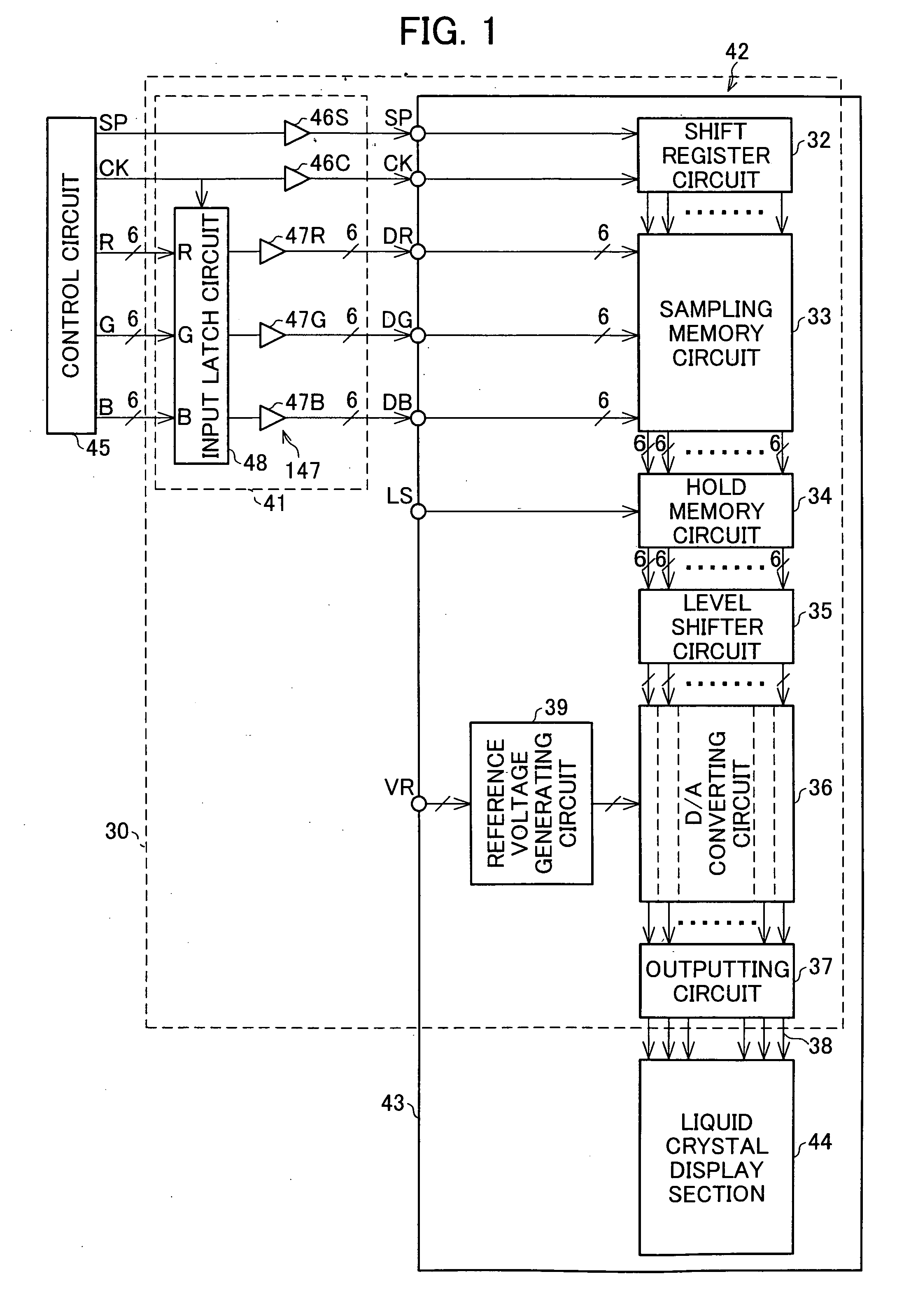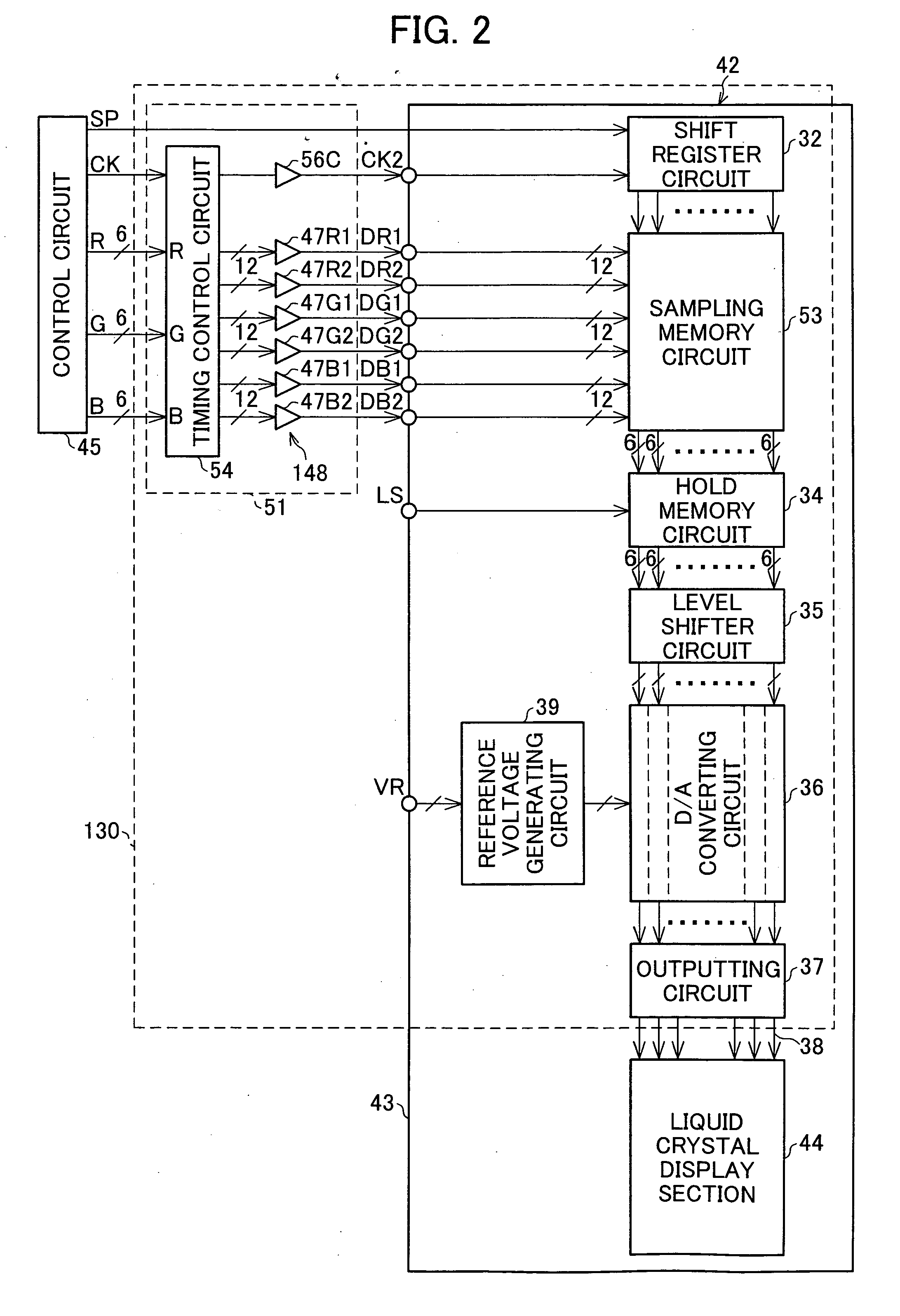Liquid crystal display device
a liquid crystal display and active matrix technology, applied in static indicating devices, fire alarms, instruments, etc., can solve the problems of the difficulty in connecting the liquid crystal display section with the liquid crystal drive circuit, etc., to reduce the load of the signal source, increase the operating speed of the drive circuit, and low power consumption
- Summary
- Abstract
- Description
- Claims
- Application Information
AI Technical Summary
Benefits of technology
Problems solved by technology
Method used
Image
Examples
embodiment 1
[0050] The following description explains one embodiment of the present invention in reference to the figures. FIG. 1 is a block diagram illustrating an arrangement of a TFT type liquid crystal display device as the liquid crystal display device in accordance with one embodiment of the present invention, which carries out display by driving display data by an LSI.
[0051] As described above, when all circuits for performing the functions of respective blocks of FIG. 8 are formed on a glass substrate, various problems occur. That is, because the input capacity of input buffer of each of the circuits on the glass substrate is large, and display data D is inputted in parallel to n source drivers as illustrated in FIG. 4, a high driving ability is required for the output section of a controller 5 outputting the display data D. Moreover, because a transfer rate from the controller 5 to the circuits on the glass substrate is high, when a data signal from the controller 5 is transferred dir...
embodiment 2
[0073] The following description explains another embodiment of the present invention in reference to the figures. Note that, for ease of explanation, the same reference numerals are used for the members having the same functions as the members used in Embodiment 1, and further explanations thereof are omitted.
[0074] As described above, operations of the circuits formed on a glass substrate (circuits contained in the liquid crystal display panel) are slower than operations of the circuits formed on a monocrystal silicon substrate. Therefore, the circuits contained in the liquid crystal panel may fail to cope with the speed of the clock signal CK used for sampling the display data. This may result in failure of proper sampling.
[0075] In order to solve such a problem, in the liquid crystal display device in accordance with the present embodiment, a data sampling speed of the circuits contained in the liquid crystal panel is adjusted to be one half of a data sampling speed according ...
PUM
| Property | Measurement | Unit |
|---|---|---|
| electron mobility | aaaaa | aaaaa |
| electron mobility | aaaaa | aaaaa |
| driving voltage | aaaaa | aaaaa |
Abstract
Description
Claims
Application Information
 Login to View More
Login to View More - R&D
- Intellectual Property
- Life Sciences
- Materials
- Tech Scout
- Unparalleled Data Quality
- Higher Quality Content
- 60% Fewer Hallucinations
Browse by: Latest US Patents, China's latest patents, Technical Efficacy Thesaurus, Application Domain, Technology Topic, Popular Technical Reports.
© 2025 PatSnap. All rights reserved.Legal|Privacy policy|Modern Slavery Act Transparency Statement|Sitemap|About US| Contact US: help@patsnap.com



